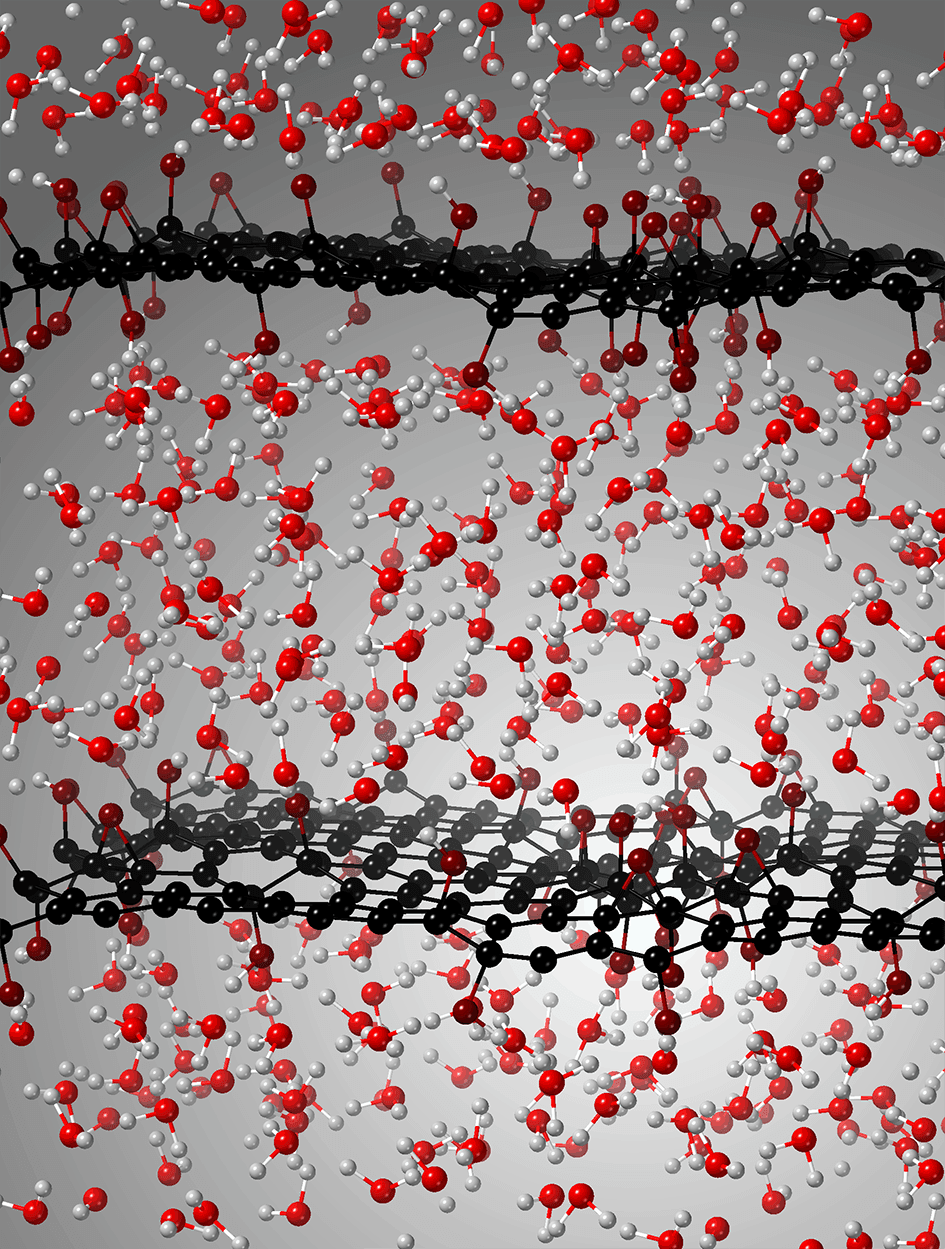We had a mail from a lovely lady in the UK who asked us if the UltraStream removed graphene oxide. She was very worried because of reports of it in her drinking water.

Er.. what? we asked.
Graphene Oxide.
Used in the vaccines, and also used, strangely enough, in water filtration.
Naturally, we asked Mother Google about it and whether it was risky to drink water containing GO.
And yes, there are risks in consuming graphene oxide. it’s too early to be more definitive; the data hasn’t appeared because graphene oxide is relatively new.
Even the structure of graphene oxide is still unclear due to its complicated non-stoichiometric nature. There are different kinds of oxygen species and bondings to carbon in graphene layer, such as epoxy, hydroxyl, carbonyl, carboxylic groups.

From a water filtration viewpoint, the difficulty is twofold.
1. We have no data.
2. Graphene oxide is just one atom across.
About as tiny as things get. So any ordinary filter that allows water to pass through it isn’t going to help.
The only other form of filtration that may work is reverse osmosis, which operates at molecular level.. but again, no data.
It appeared hopeless.
But then we remembered our latest upgrade to the Ultrastream, our Virus Guardian® technology. We added it primarily to upgrade our virus, bacteria and cyst protection, but also for its ability to filter a huge range of other contaminants.
Virus Guardian® is certainly different. It offers extreme levels of filtration.. and yes, right down to the atomic level. Unlike reverse osmosis which forces water through membrane, it attracts contaminants and holds them tight. And.. we have the NSF test results that show extraordinary results, like 99.99% reductions of viruses!
Virus Guardian® gives the contaminants plenty of ‘room to move’. It doesn’t inhibit flow. It just sets a trap, in the form of trillions of nano fibres, each one electrostatically charged.
This charge creates a field around the nanofibre, which extends into the passing water. This field magnetically attracts everything that passes.
It’s a unique method and we love it because prior to Virus Guardian®, the only way to nano filter was to accept that your pure water would come at the flow rate of a dripping tap. Furthermore, these ‘tight’ filters also clogged quickly and so became a real expense.
So the question remains: does the UltraStream remove graphene oxide?
The answer, frankly, is that we don’t know.
However we contacted the inventors of the Virus Guardian technology and here’s what they said:
”So far, our reading indicates that Graphene is insoluble in water and negatively charged over a very wide pH range. This is relatively good news. Virus Guardian® technology is effective at particle removal down to a couple microns and it is positively charged, which means it removes negatively charged materials down to the size of ions.”
What I think we can say
.. is that in our experienced opinion, it is the best bet. We are not fans of reverse osmosis for many reasons:
1. It strips the water of beneficial minerals
2. Its all-important membrane can be affected in its capability by chlorine, and there is no way of knowing if the chlorine has been removed prior to the membrane.
3. It’s a messy installation. In almost all cases it needs a specialist to visit your home to change the filter and perform the all-essential disinfection.
4. Flow rates are woeful.
So.. what to do?
We always strive to give the best information we can. We spend thousands of dollars on testing the Ultrastream’s contaminant removal capacity over its usable lifetime. We are confident of its ability and that helps us with our motto of ‘Happy Customer, Happy Us.”
The Virus Guardian has been tested and found to reduce or remove the following
- >99.99% viruses (polio, rotavirus, norovirus, etc.)**
- >99.99% bacteria (e coli, legionella, pseudomonas, etc.)**
- >99.95% cysts (giardia, cryptosporidium, etc.)**
- >95% Lead**
- >80% Ferrous Iron**
- >95% Arsenic V**
- >95% Cadmium**
- >85% Chromium**
- >75% Selenium**
- >60% Mercury
- Chlorine
- Bromine
- Iodine
- VOCs (volatile organic compounds)
- PCBs and BPA
- Residual pharmaceuticals
- Biofouling precursors: organic acids, proteins, polysaccharides

